1.
Introduction
The field of mathematical analysis that deals with the study of arbitrary order integrals and derivatives is known as fractional calculus. Because of its numerous applications across a wide range of fields, this field has increased in importance and recognition over the past few years. According to researchers, this field is the most effective at identifying anomalous kinetics and has numerous uses in a variety of fields. Ordinary differential equations with fractional derivatives can be used to simulate a variety of issues, including statistical, mathematical, engineering, chemical, and biological issues. Several distinct forms of fractional integrals and derivative operators (see e.g., [1,2,3,4]), including Riemann-Liouville, Caputo, Riesz, Hilfer, Hadamard, Erdélyi-Kober, Saigo, Marichev-Saigo-Maeda and others, have been thoroughly investigated by researchers. From an application perspective, we suggest the readers to see the work related to the fractional differential equations presented by [5,6,7,8]. In [9], the authors studied symmetric and antisymmetric solitons in the defocused saturable nonlinearity and the PT-symmetric potential of the fractional nonlinear Schrödinger equation. In [10], the fractional exponential function approach is used to study a time-fractional Ablowitz-Ladik model, and bright and dark discrete soliton solutions, discrete exponential solutions, and discrete peculiar wave solutions are discovered. In [11], the authors presented the rich vector exact solutions for the coupled discrete conformable fractional nonlinear Schrödinger equations by taking into account the conformable fractional derivative.
On the other hand, special functions like Gamma, Beta, Mittag-Leffler, et al. play a vital part in the foundation of fractional calculus. Moreover, the Mittag-Leffler function is regarded as the fundamental function in fractional calculus. The Prabhakar fractional operator containing a three-parameter version of the aforementioned function in the kernel. The M-L function has been extensively studied to construct solutions of fractional PDEs, such as dynamical characteristic of analytical fractional solitons for the space-time fractional Fokas-Lenells equation, soliton dynamics based on exact solutions of conformable fractional discrete complex cubic Ginzburg-Landau equation and Abundant fractional soliton solutions of a space-time fractional perturbed Gerdjikov-Ivanov equation by a fractional mapping method, see [12,13,14]. Strong generalizations of the univariate and bivariate Mittag-Leffler functions, which are known to be important in fractional calculus, are the multivariate Mittag-Leffler functions.
The well-known one-parameter Mittag-Leffler (M-L) function is defined by [15,16] as follows
where C represents the set of complex numbers and ℜ(a) denotes the real part of the complex number.
The generalization of (1.1) with two parameters is defined by [17,18] as
Later on, Agarwal [19], Humbert [20] and Humbert and Agarwal [21] studied the properties and applications of M-L functions. In [22], the generalization of (1.1) and (1.2) is defined by
In [23], the following generalization of the M-L function is defined by
In [24], Rahman et al. proposed the following generalized of M-L function by
where a,b,c,d∈C;ℜ(c)>0,ℜ(a)>0,ℜ(b)>0,q>0 and Bp(x,y)=∫10tx−1(1−t)y−1e−t−ptdt is the extension of beta function (see [25]).
Gorenflo et al. [26] and Haubold et al. [27]) studied the various properties of generalized M-L function. In [28], a new generalization of M-L function (1.3) is presented by
where (λ;p)l is the Pochhammer symbol defined by Srivastava et al. [29,30] as
The researchers examined the developments of these extension, (1.6) and (1.7) and studied their related features and applications. In [30], Srivastava et al. proposed the following generalized hypergeometric function
where δj∈C for j = 1, 2, ⋯, s, ζk∈C for k=1,2,⋯,t, and ζk≠ 0, -1, -2, ⋯.
The integral representation of (μ;p)η is explained by
where ℜ(ρ)>0 and ℜ(μ+η)>0. In particular, the related confluent hypergeometric function 1F1 and the Gauss hypergeometric function 2F1 are given by
and
The expansion of the generalised hypergeometric function rFs, which was studied by [30], has r numerator and s denominator parameters. Researchers recently developed several extensions of special functions, together with their corresponding characteristics and applications. Using extended beta functions as its foundation, Nisar et al. [31], Bohner et al. [32] and Rahman et al. [33] developed an enlargement of fractional derivative operators.
The multivariate M-L function is defined by [34] as follows:
where zi,ai,b,ci∈C; i=1,2,…,j, ℜ(ai)>0, ℜ(b)>0 and ℜ(ci)>0.
In [35,36,37,38,39], the authors have studied various properties and applications of different type of generalized M-L functions. For real (complex) valued functions, the Lebesgue measurable space is defined by
The left and right sides fractional integral operators of the Riemann-Liouville type are defined by [3,4] as follows:
and
where h∈L(r,s), λ∈C and ℜ(λ)>0.
The left and right sides Riemann-Liouville fractional derivatives for the function h(x)∈L(r,s), λ∈C, ℜ(λ)>0 and n=[ℜ(λ)]+1 are defined in [3,4] by
and
respectively. The generalized differential operator Dλ,vr+ of order 0<λ<1 and type 0<v<1 with respect to x can be found in [2,4] as
In particular, if v=0, then (1.16) will lead to the operator Dλr+ defined in (1.15).
We also take into account the aforementioned well-known results.
Theorem 1.1. In [40], the following result for the fractional integral is presented by
where λ, η∈C, ℜ(λ)>0, ℜ(η)>0,
Theorem 1.2. [41] Suppose that the function h(z) has a power series expansion h(z)=∞∑k=0knzk and it is analytic in the disc |z|<R, then we have the following result
Lemma 1.1. (Srivastava and Tomovski [42]) Suppose that x>r, λ∈(0,1), v∈[0,1], ℜ(η)>0 and ℜ(λ)>0, then we have
The generalized multivariate M-L function (1.12) is then defined in terms of the modified Pochhammer symbol (1.7) and its different features as well as the accompanying integral operators are examined. This is driven by the aforementioned modifications of special functions.
Motivated by the above results and literature, the paper has the following structure: First, we describe and investigate a novel generalization of the multivariate M-L function using a generalized Pochhammer symbol. Secondly, we offer a few differential and fractional integral formulas for the explored multivariate M-L function. By using the new form of the multivariate M-L function, a new generalization of the fractional integral operator is introduced, and some fundamental characteristics of the operator are discussed.
2.
The generalized multivariate of M-L function
We are in a position to present the generalized multivariate M-L function by utilizing the extended Pochhammer symbol in (1.7) as follows:
where ai,b,ci∈C;ℜ(ai)>0,ℜ(b)>0,,p≥0 for i=1,2,⋯,j. The special case for a1=1 and l2=⋯=lj=0 in (2.1) can be reduced to extended confluent hypergeometric function (1.11) as follows:
In coming results, we demonstrate some fundamental characteristics and integral representations of the generalized multivariate M-L function.
Theorem 2.1. For the multivariate M-L function defined in (2.1), the following relation holds true:
where ai,b,ci∈C;ℜ(ai)>0,ℜ(b)>0,,p≥0 for i=1,2,⋯,j.
Proof. From (2.1), we have
which is the desired result (2.3).
Theorem 2.2. For the generalized multivariate M-L function defined in (1.12), the following relations hold true:
and
where ai,b,ci∈C;ℜ(ai)>0,ℜ(b)>0,,p≥0 for i=1,2,⋯,j, and ℜ(b−m)>0 with m∈N.
Proof. Differentiating (1.12) m times with respect to z1,z2,⋯,zj respectively, we get
Now using (λ;σ)μ+p=(λ)μ(λ+μ;σ)p and (λ)μ+p=(λ)μ(λ+μ)p, we get
which is the desired result (2.4). Similarly, to prove (2.5), we have
Differentiating m times and using the relation l(l−1)!=l!, we get
The proof is completed.
Corollary 2.1. The generalized multivariate M-L function has the following integral representations:
where ai,b,ci,ϖi∈C;ℜ(ai)>0,ℜ(b)>0,p≥0 for i=1,2,⋯,j.
3.
Fractional integral and differential formulas of generalized M-L function
In this section, we present some fractional integration and differentiation formulas of generalized M-L function given in (2.1).
Theorem 3.1. Suppose x>r(r∈R+=[0,∞)), ai, b, ci, ϖ∈C, ℜ(ai)>0 and ℜ(ci)>0, ℜ(b)>0 and ℜ(λ)>0, then the following relations hold true:
and
Proof. Consider
By the use of (1.17), we have
which gives the proof of (3.1).
Next, we have
which on using (3.1) takes the following form:
Applying (2.5), we get
which gives the proof of (3.2).
To obtain (3.3), we have
By applying (1.18), we get
which completes the required proof.
Remark 3.1. Applying Theorem 3.1 for p=0, then we obtain the result presented in [34].
4.
Generalization of fractional integral and its properties
In this section, we define a fractional integral involving newly defined multivariate M-L function and discuss its properties.
Definition 4.1. Let b,ai,ci,ϖi∈C, ℜ(ci)>0, ℜ(ai)>0 and ℜ(b)>0 and h∈L(r,s). Then the generalized left and right sided fractional integrals are defined by
and
respectively.
Remark 4.1. If we consider p=0, then the operators defined in (4.1) and (4.2) will take the form defined earlier by [34]. Similarly, if we consider p=0 and j=1, then the operators defined in (4.1) and (4.2) will take the form defined by [22]. If we take j=1, then the work done in this paper will lead to the work presented by [28]. Also, if we consider one of ϖi=0, for i=1,2,⋯,j, then the operators defined in (4.1) and (4.2) will take the form of the classical operators.
Next, we prove the following properties of integral operator defined in (4.1).
Theorem 4.1. Suppose that b,ai,λ,ci,ϖi∈C, ℜ(ai)>0, ℜ(b)>0, ℜ(λ)>0, p≥0 and ℜ(ci)>0 for i=1,2,⋯,j, then the following result holds true:
Proof. By the use of definition (4.1), we have
Therefore, we get
which gives the desired proof.
Theorem 4.2. Suppose that ci,ai,b,ϖi∈C, ℜ(ai)>0, ℜ(b)>0, p≥0 for i=1,2,⋯,j, then the following result holds true:
Where
Proof. By the use of (1.13) and (4.1) and by interchanging integration and summation order, we have
by setting u=x−ϱ. After simplification, we obtain
It follows that
where
which gives the desired result.
Corollary 4.1. If we take ai,b,ci,ϖi∈C, ℜ(ai)>0, ℜ(b)>0, ℜ(ci)>0 with i=1,2,⋯,j, then the following result holds true:
Proof. Consider
It follows that
which gives the desired proof.
Theorem 4.3. The generalized fractional operator can be represented in term of Riemann–Liouville fractional integrals for ci, ai, b, ϖi∈C with ℜ(ai)>0, ℜ(b)>0, ℜ(ci)>0 for i=1,2,⋯,j, p≥0 and x>r as follows:
Proof. By utilizing (2.1) in (4.1) and then interchanging the order of summation and integration, we have
which gives the desired proof.
Theorem 4.4. For λ, ci, ai, b, ϖi∈C with ℜ(ai)>0, ℜ(b)>0, ℜ(ci)>0, ℜ(λ)>0, for i=1,2,⋯,j, p≥0 and x>r, then the following result holds true:
where h∈L(r,s).
Proof. By employing (1.14) and (4.1), we have
It follows that
By considering ϱ−u=θ, we get
Hence, from (1.14) and applying (3.1), we obtain
Thus, we have
Next, consider the right hand side of (4.3) and employing (4.1) to derive the second part, we have
It follows that
By setting x−ϱ=θ, we get
Further, by using (1.14) and applying (3.1), we obtain
Thus, (4.4) and (4.5) gives the desired proof.
5.
Conclusions
Nowadays, the theories are developed very rapidly. The scientists are introducing more advanced and generalized forms of the classical ones. In this present study, we introduced a generalized form of the multivariate M-L function (2.1) by employing the generalized Pochhammer symbol and its properties. By using this more extended form of M-L, we introduced a fractional integral operator and studied some of the basic properties of this operator. The special cases of the main results are if we take p=0, then the operators defined in (4.1) and (4.2) will reduce to the work done by [34]. Similarly, if we take j=1 and p=0, then the operators defined in (4.1) and (4.2) will lead to the work done by [22]. If we take j=1, then the work done in this paper will lead to the work presented by [28]. Moreover, if we consider one of ϖi=0, for i=1,2,⋯,j, then the operators defined in (4.1) and (4.2) will reduce to the classical R-L operators. We believe that our proposed operator will be more applicable in the fields of fractional integral inequalities and operator theory.
Acknowledgments
The author T. Abdeljawad would like to thank Prince Sultan University for supporting through TAS research lab. Manar A. Alqudah: Princess Nourah bint Abdulrahman University Researchers Supporting Project number (PNURSP2023R14), Princess Nourah bint Abdulrahman University, Riyadh, Saudi Arabia.
Conflict of interest
The authors declare no conflict of interest.











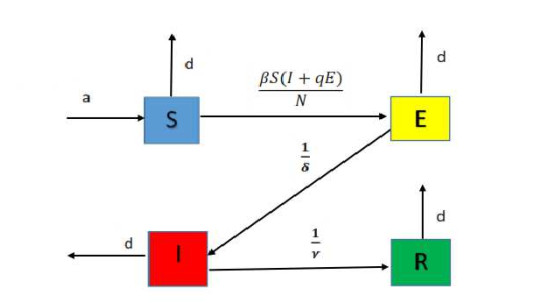

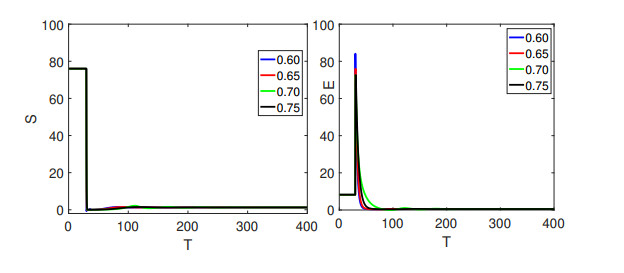
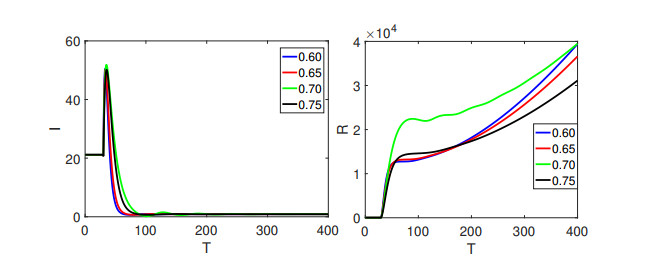
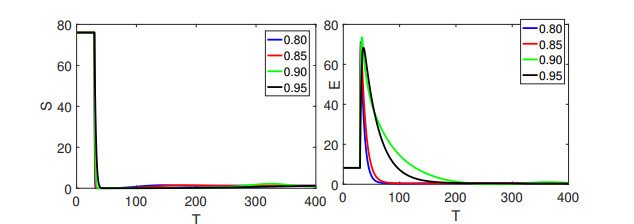

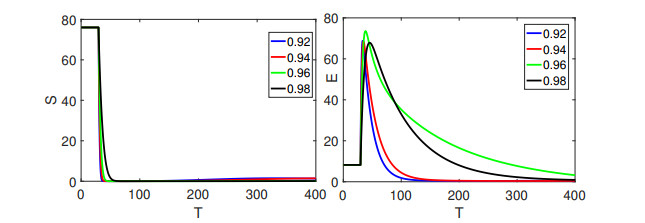
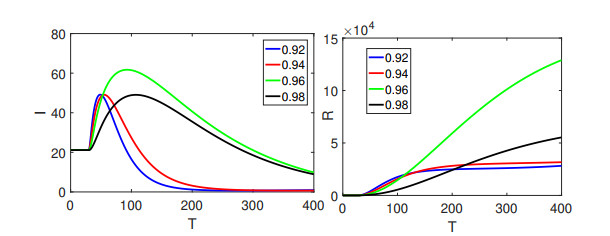

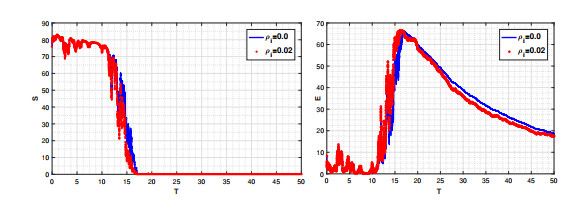
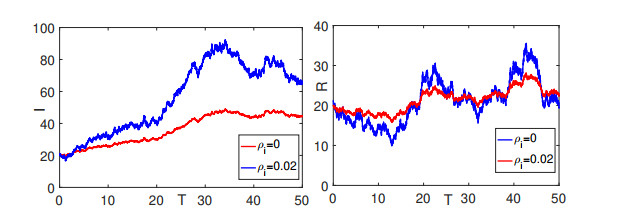


 DownLoad:
DownLoad: